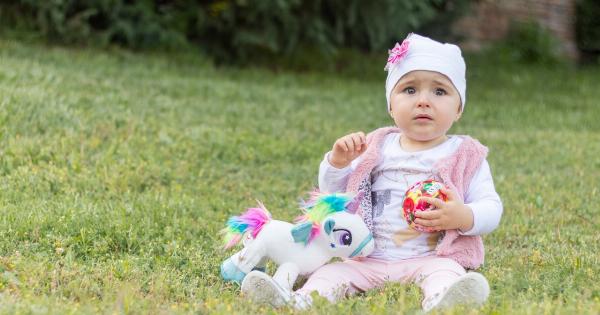Diabetes is a chronic health condition that occurs when the body is unable to properly regulate blood sugar levels. Although it is commonly associated with adults, children can also develop diabetes.
In fact, type 1 diabetes is one of the most prevalent chronic illnesses in children, affecting approximately 1 in every 400 children under the age of 20. Knowing the warning signs and symptoms of diabetes in children is crucial for early diagnosis and treatment. Here are some red flags to watch out for:.
Excessive Thirst and Urination
If your child suddenly has an increased thirst and is urinating more frequently than usual, it could be a sign of diabetes. This is because the body is trying to flush out excess glucose from the blood through urine, which can lead to dehydration.
Pay attention to whether your child is drinking more fluids than usual and having to use the bathroom more frequently, especially if they are experiencing bedwetting or accidents.
Fatigue and Irritability
Diabetes can cause fatigue and irritability in children, as their bodies are deprived of the glucose they need for energy. If your child complains of feeling tired or seems more irritable than usual, it could be a sign of diabetes.
This is particularly concerning if your child is normally active and outgoing but suddenly exhibits low energy levels and mood swings.
Weight Loss Despite Increased Appetite
Unexplained weight loss can be a red flag for both type 1 and type 2 diabetes. If your child has lost weight despite an increased appetite, it could be a sign of diabetes.
The body is unable to properly process glucose for energy, which causes it to break down muscle and fat instead. Pay attention to whether your child is eating more but still losing weight or if they are experiencing sudden weight loss without trying.
Blurred Vision and Eye Problems
High blood sugar levels can cause damage to the blood vessels in the eyes, leading to blurry vision, trouble focusing, and other eye problems. If your child complains of vision problems, it could be a sign of diabetes.
This is particularly concerning if your child has never had vision problems before.
Yeast Infections and Skin Issues
Children with diabetes are more susceptible to yeast infections, as high blood sugar levels can create an environment that encourages yeast growth.
If your child is experiencing frequent yeast infections or other skin issues, it could be a sign of diabetes. Pay attention to whether your child has dry, itchy skin, rashes, or other skin irritations.
Fruity Breath Odor
If your child’s breath smells fruity or sweet, it could be a sign of ketoacidosis, a serious complication of diabetes.
This occurs when the body is unable to use glucose for energy and starts breaking down fat instead, leading to the buildup of ketones in the blood. Pay attention to whether your child’s breath has an unusual odor, especially if they are experiencing other symptoms of diabetes.
Difficulty Healing Wounds
High blood sugar levels can impair the body’s ability to heal wounds, leading to slower healing times and an increased risk of infections.
If your child has wounds or sores that are slow to heal or become infected easily, it could be a sign of diabetes. Pay attention to whether your child is experiencing frequent infections or has wounds that do not heal quickly.
Tingling or Numbness in the Hands and Feet
High blood sugar levels can cause damage to the nerves in the hands and feet, leading to tingling, numbness, and other sensory issues. If your child complains of tingling or numbness in their hands or feet, it could be a sign of diabetes.
This is particularly concerning if your child has never experienced these symptoms before.
Increased Hunger
Children with diabetes may experience increased hunger, as their bodies are not able to properly use glucose for energy. If your child is constantly hungry or experiencing sudden food cravings, it could be a sign of diabetes.
Pay attention to whether your child is eating more than usual or if they are experiencing cravings for sugary or high-carbohydrate foods.
Dizziness or Fainting
Low blood sugar levels (hypoglycemia) can cause dizziness, lightheadedness, and fainting in children with diabetes. If your child is experiencing these symptoms, it could be a sign of hypoglycemia.
This is particularly concerning if your child has never had these symptoms before or if they occur suddenly.
It is important to remember that these symptoms can also be indicative of other health conditions, so it is important to speak with your child’s healthcare provider if you notice any of these red flags.
Early diagnosis and treatment of diabetes can help prevent serious complications and improve your child’s overall health and well-being.

























